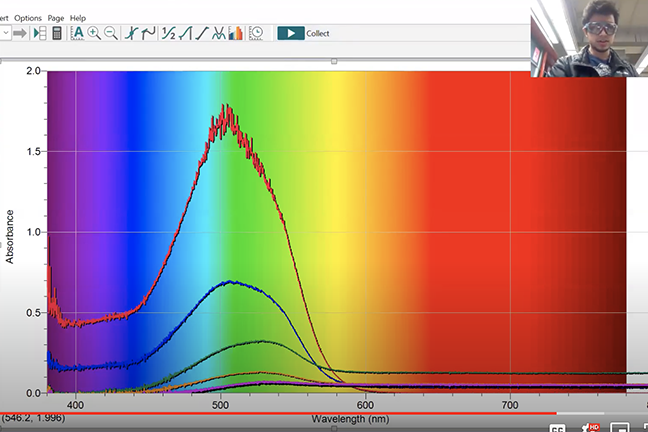CSE faculty and students pivot to remote labs

In a pandemic, laboratory courses migrate to computer screens
May 8, 2020
Teaching lab courses online is not ideal, but departments in the College of Science and Engineering are stepping up to the challenge.
Chemistry labs online
In just two days, Distinguished University Professor Michelle Driessen, for example, pivoted the college’s General Chemistry Laboratory courses online. She and Hannah Leopold, a teaching specialist in the Department of Chemistry, videotaped experiments or trial runs of each experiment remaining on the semester schedule with the help of their student teaching assistants.
"For some experiments, we had to record and create data for seven different unknowns to create variability between our student groups and ensure authenticity," Leopold said. "At one time, we had eight different teaching assistants recording experiments and collecting data in four different locations.”

The team also spent a lot of time testing features in the video-streaming software Zoom to ensure everything worked.
During the Zoom labs, students watch the pre-recorded videos and write down their observations, and data—like they normally would. Periodically, the teaching assistants would pause the videos to pose questions, such as “what do you expect to happen or see when x is added to y?” Students could also raise their hands to ask questions or type a query in the chat box.
Teaching electrical engineering via Zoom
Zoom was also the platform of choice for James Leger, a professor in the Department of Electrical and Computer Engineering, in teaching his Physical Optics Lab course.
“The lab is a classic physics set-up, complete with lasers, optics of various kinds, detectors, camera, and computers,” Leger said.
“Luckily, my teaching assistant [Nathan Mowry] took extensive notes and high-quality data when he was a student in the class last year," he added. “Nathan and I met with the students on Zoom every week, but rather than helping them set up equipment and take data, we discussed experimental intricacies and mathematical methods that they need to apply to our pre-recorded data.”
Students in other ECE lab courses, on the other hand, were mailed various components and test equipment so they could continue learning as they would have in campus facilities. The department tapped its Hartig Fund to buy and ship these items.
So, what is a remote laboratory experience like?
“It’s just different,” Leger said. “Although it pains me to know that our students are missing the joy of actually seeing the interference fringe from the interferometer they just spent an hour aligning, I know they still can appreciate the power of the optical effects and techniques we are presenting.”
Yet, despite missing in-person teaching, Leger—like his peers across the University of Minnesota—is embracing the extraordinary circumstances brought on by the global coronavirus pandemic.
“… the online format has forced me to evaluate my teaching methods and has introduced me to new teaching styles,” he explained. “In essence, I am learning new things along with the students. Sometimes adversity can be the key to advancement. And when we all come out of this struggle, I expect to be a better teacher for it.”
Read more about the virtual chemistry labs in the article “Commitment to students makes online labs possible.”
For more insights on remote lessons from ECE faculty, see the article “Teaching Online During the COVID-19 Pandemic.”
If you’d like to support students and innovative teaching at the University of Minnesota College of Science and Engineering, visit our CSE Giving website.
